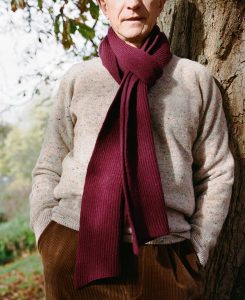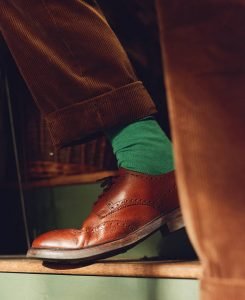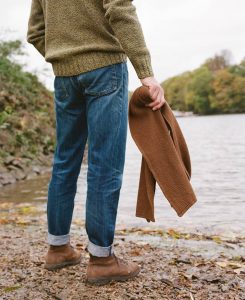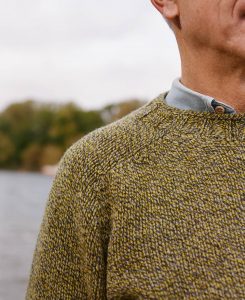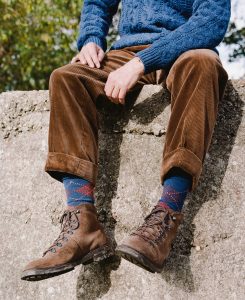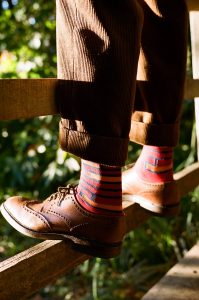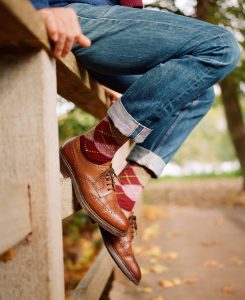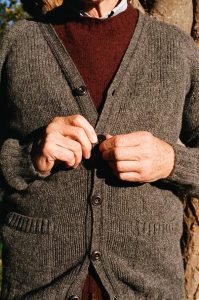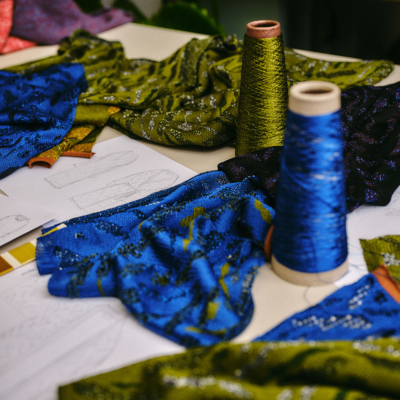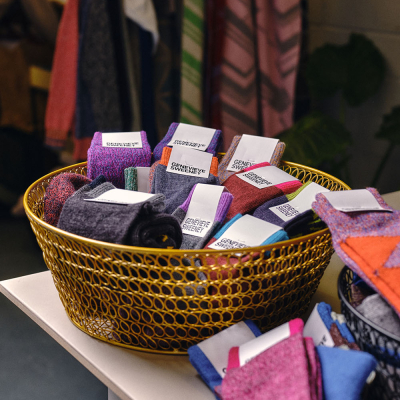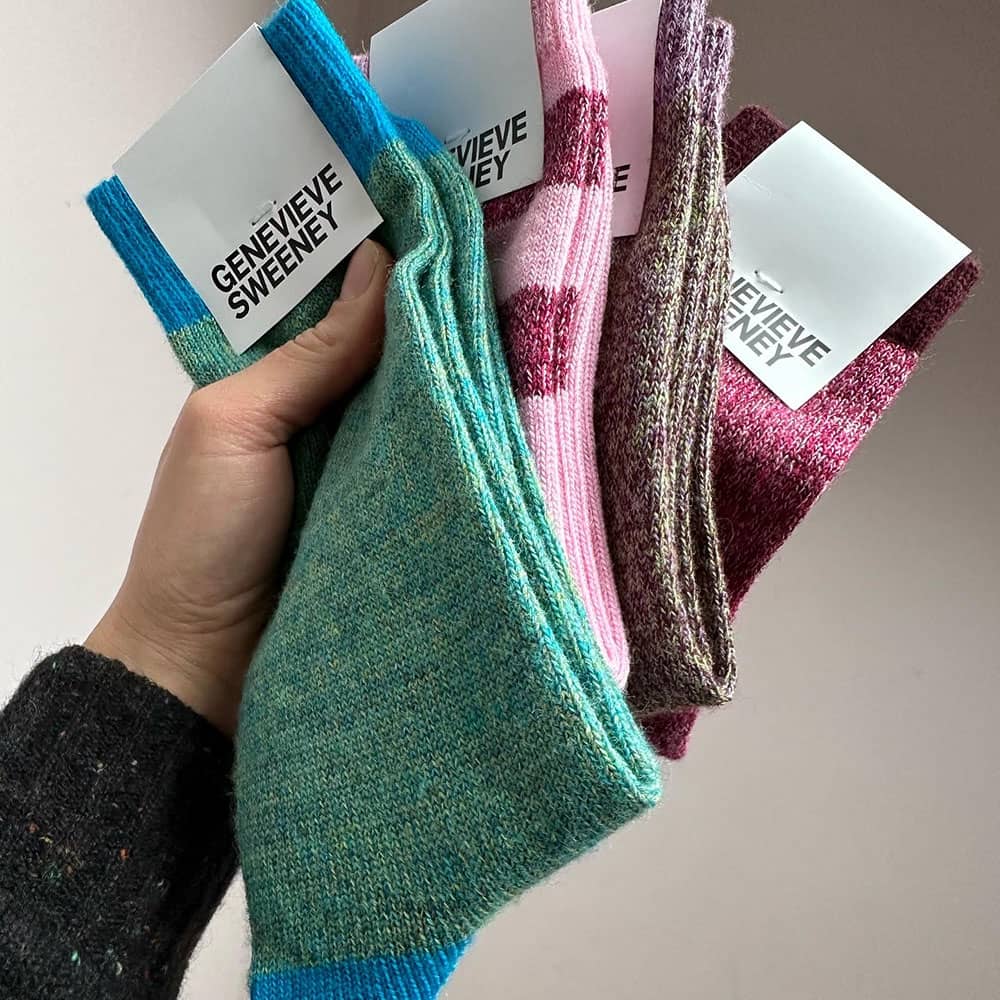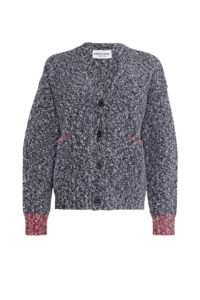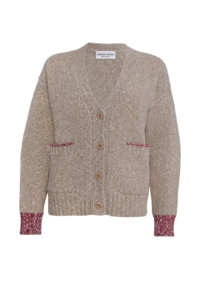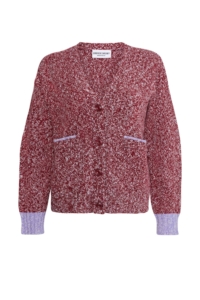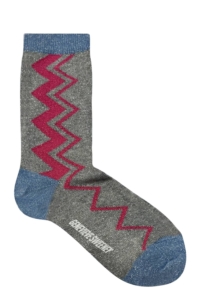GS Journal
British Menswear Style | Interview with the GreyFox
Last week, I had the pleasure of sitting down with David, GreyFoxStyle, to chat all things menswear, style, and British-made. With his impeccable taste and attention to detail, David effortlessly embodies the essence of sartorial, timeless style. David has been a great supporter of my brand for many years, and I was honoured when he styled and modelled in my menswear campaign.
I loved every piece that David styled in the photoshoot, and all British made!
Showcasing enduring quality, sartorial textures, and attention to detail, it led made me think about how to build a timeless wardrobe; notably a British made capsule wardrobe.
GS: I am such a great admirer of your style, such beautiful textures and colour palettes. Could you describe to our readers your casual and sartorial style?
GF: Many thanks – that’s very kind of you to say so. Certainly colour and texture are important, as well as shape and quality of clothes. For both casual and more formal I have fairly classic tastes; jeans and cords with knitwear and denim or chambray shirts for casual and tailored tweed jackets and the occasional suit when I want to be more sartorial – I even wear a tie from time to time!
I enjoy trying to look reasonably stylish whatever I’m wearing. The view has developed recently that to feel comfortable you have to look scruffy or to be wearing sportswear and I think this is a mistake. We can take pride in our appearance by wearing well made and stylish outfits without feeling uncomfortable.
GS: As an ambassador and cheerleader of British-made brands, how did you discover British-made, and why is it important to you?
GF: Shortly after I started the blog I was looking around for quality menswear and found, to my surprise, that much is still made here in the UK. I’d seen the decline of British manufacture throughout the last years of the last century and assumed that all is now imported, but this is far from the case. I tried a few brands and found that I was often paying far less than established ‘designer’ brands for clothes of better quality.
Buying British brands is important not only because we can usually be sure that those making our clothes have been fairly paid and treated, but also because cutting down the miles that our clothes travel is more sustainable. We encourage skills that have been traditional in the UK for decades and knowing where your clothes were made, and by whom, adds to the pride of ownership. We also make clothes of excellent quality here – you may pay more for them than for products made overseas, but in general they will last better and you can be sure that they were ethically produced.
GS: Who are some of the key influencers or style icons in menswear that have influenced your personal style?
GF: I’m often asked this question and have to say that I don’t have any specific influencers or style icons. I develop my tastes from looking around at what others wear on Instagram, in magazines and on the streets. Men of style both living and in the past have a strong influence – see how Cary Grant, Steve McQueen or King Charles III wear their clothes and you learn much from particular elements of their style. All have the confidence to stand tall and wear their clothes with panache.
Style can be innate, but it’s available to us all if we approach dressing well with an open mind and take an interest in colour, proportion and we wear what works for us. I don’t wear something just because a fashion editor tells me to or because I’m told it’s fashionable. We should buy for ourselves.
GS:What sets British-made brands apart from others regarding quality, craftsmanship, and style?
GF: The UK is historically probably the greatest influence behind current western menswear styles. Since Beau Brummell men have tended to avoid colour and, while that’s changing fast, there is still a classic conservatism about British products that is sought after worldwide. Savile Row tailoring, British knitwear, cloths such as corduroy and tweed and quality footwear form the basis of western styles of men’s clothing.
British clothing manufacture has a long history, going back beyond the industrial revolution. While many brands took manufacture overseas in the last century, the skills and traditions were preserved by those who stayed and these brands have found markets in Asia and the USA where their style and quality are appreciated. British modesty often prevents them from becoming international names, but their products are at least equal to and often better than those of the huge international designer names that consumers often favour – generally because they just don’t know of the British alternatives.
GS: How do you balance staying true to your personal style while also showcasing and supporting British-made brands?
GF: The short answer is that I have a very British style so I have no problems wearing British products and staying true to my personal style. I don’t like everything of course, but can still encourage people to try British products – so many consumers are sadly unaware that stuff is still made in the UK.
GS: What pieces could you never live without in your wardrobe?
GF: Good shoes, knitwear and a battered pair of British-made denims.
GS: What are your tips for styling British knitwear in the autumn and spring?
GF: The fickle British weather means that knitwear is needed all year. Choose lighter weights of cashmere and lambswool for autumn and spring. Brighter colours work better when the weather turns warm and sunny. A sleeveless vest or cardigan will always be useful and a light jumper can be tied around the shoulders or waist when it gets warmer. Wear knitwear with shorts, chinos or linen trousers to enhance the seasonal look.
GS: If someone is looking into investing in British-made brands, how would you advise where they start and incorporate into their personal style?
GF: Finding brands that sell products made in the UK can be tricky. Some brands advertise themselves as having ‘British style’ while selling clothes made overseas. Check with the brands and look on labels. Lists of British manufacturing brands are hard to find; on my Instagram profile I’ve collected a large number of brands that sell British-made and I update that list as often as I can.Even if it’s incomplete, there are plenty there to get you started in a search for UK products.
You may feel you have to pay more for British products. Clothes made overseas can be cheap because the people who make them are paid poorly and some work in poor conditions. The clothes may be badly made from poor quality materials – and they will have travelled a long way to reach the UK. Most UK manufacturers will use the best materials, treat their workers properly and make their products with skill. I’ve visited many factories, mills and workshops in England and Scotland and common to all of them is the pride of the people who design and make the clothes.
Look around, see what styles you like, try a few and then build a wardrobe that is high quality and where all the pieces have a place and work together. A British-made a capsule wardrobe will be a source of pride, a pleasure to wear and last a very long time.
Finally, finding favourite British brands and sticking to them can be a real source of pride. We can all buy internationally famous ‘designer’ named clothes on the high street, but to find your own high quality, British made label and getting to know the brand is great fun. It enables you to express your individuality and you will find you end up with products that will last longer and give you more pleasure than a product that everyone wears simply because it has a famous name stitched on the chest.
Love to hear more, you can read my interview on GreyFoxBlog Here.
Recent Posts
GS Collections
GS Sock Subscription
Subscribe and each month you'll receive a surprise pair of socks showcasing Genevieve's signature blend of premium yarns and contemporary patterns in seasonal, statement colours.


